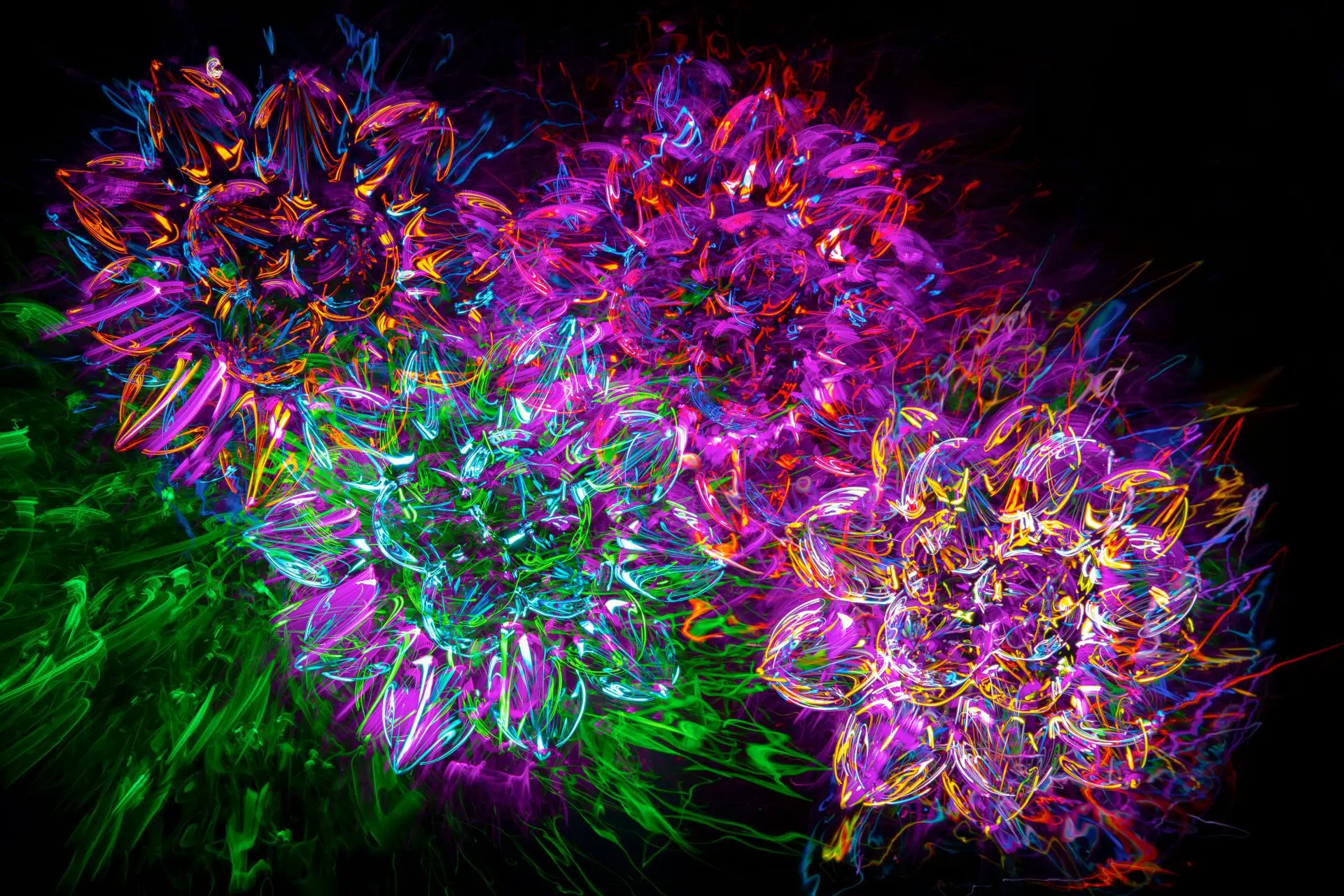Understanding Yin and Yang: Harmony in Duality

Looking for more amazing products? Check out our online store and explore our collection here! Happy shopping!
Before diving in, please note: This post is for informational purposes only. If you’d like to know more about how we approach topics, feel free to check out our friendly Disclaimer Page.
Hey there, amazing readers! 
We’re committed to delivering quality posts, and your support (even just sticking around despite the ads) means everything to us. So, bear with us, and thanks for helping us keep the good vibes rolling. Now, on to the fun stuff!
TRANSLATE BUTTON AT THE END OF THE ARTICLE
A Quick Overview: Introduction to Yin and Yang
Yin and Yang are fundamental concepts in Chinese philosophy that represent the dualistic nature of the universe.
They are often depicted as complementary forces that are interconnected and interdependent.
The concept of Yin and Yang is based on the idea that everything in the world consists of two opposing yet harmonious aspects.
In Chinese cosmology, Yin is associated with attributes such as darkness, passivity, femininity, coldness, and receptivity.
On the other hand, Yang is linked to qualities like light, activity, masculinity, warmth, and assertiveness.
Together, Yin and Yang create a dynamic equilibrium that is essential for maintaining harmony and balance in all aspects of life.
Understanding the interplay of Yin and Yang can help individuals navigate through the complexities of life and achieve a state of harmony and balance.
This article will delve into the origins of Yin and Yang, their characteristics, and how they manifest in different aspects of life such as nature, traditional Chinese medicine, martial arts, and feng shui.
The Concept of Duality
The concept of Yin and Yang is rooted in the idea of duality, where two seemingly opposing forces are actually interconnected and interdependent.
In Chinese philosophy, the duality of Yin and Yang is seen as the foundation of all existence.
Yin represents the passive, receptive, and feminine aspects of the universe, while Yang symbolizes the active, assertive, and masculine qualities.
The relationship between Yin and Yang is not one of conflict, but rather one of balance and harmony.
They are constantly in flux, with each force transforming into the other in a perpetual cycle of creation and destruction.
The concept of duality is integral to understanding the interconnectedness of all things and the need for harmony between opposing forces.
In Chinese culture, the duality of Yin and Yang is reflected in various aspects of life, from art and literature to medicine and martial arts.
By recognizing and embracing the duality of Yin and Yang, individuals can gain a deeper understanding of the world around them and achieve a greater sense of balance and harmony in their lives.
Origins of Yin and Yang
The origins of Yin and Yang can be traced back to ancient Chinese philosophy, particularly the teachings of the Yi Jing (Book of Changes).
The concept of Yin and Yang is believed to have originated around the 3rd millennium BCE, during the Shang dynasty in China.
According to Chinese cosmology, Yin and Yang are the primordial forces that gave rise to the universe.
The symbol of Yin and Yang, known as the Taijitu, represents the interplay of these two forces in a continuous cycle of creation and destruction.
The Taijitu consists of a black and white swirl, with a dot of the opposite color in each section, illustrating the harmonious balance between Yin and Yang.
The concept of Yin and Yang has influenced various aspects of Chinese culture, including philosophy, medicine, astrology, and martial arts.
It is a foundational principle in Taoism, Confucianism, and other schools of thought, shaping the way people perceive the world and their place within it.
Characteristics of Yin
Yin is often associated with qualities such as darkness, coldness, passivity, femininity, and receptivity.
It represents the more introspective and nurturing aspects of existence.
Some key characteristics of Yin include:
Darkness: Yin is linked to the night, darkness, and the hidden aspects of life.
Coldness: Yin is associated with coolness, stillness, and tranquility.
Passivity: Yin is passive, yielding, and receptive, embodying qualities of gentleness and flexibility.
Femininity: Yin is often seen as the feminine aspect of the universe, representing qualities such as intuition, nurturing, and compassion.
Receptivity: Yin is open to receiving energy, ideas, and experiences from the external world.
In the context of Yin and Yang, Yin is essential for providing balance and grounding to the more dynamic and assertive qualities of Yang.
It is through the interplay of Yin and Yang that harmony and equilibrium are achieved in the universe.
Characteristics of Yang
Yang, on the other hand, embodies qualities such as light, warmth, activity, masculinity, and assertiveness.
It represents the outward, dynamic, and expansive aspects of existence.
Some key characteristics of Yang include:
Light: Yang is associated with the day, light, and visibility, symbolizing clarity and enlightenment.
Warmth: Yang represents heat, energy, and vitality, bringing warmth and vigor to life.
Activity: Yang is active, dynamic, and assertive, driving change and growth.
Masculinity: Yang is often seen as the masculine aspect of the universe, embodying qualities such as strength, courage, and leadership.
Assertiveness: Yang is assertive, decisive, and goal-oriented, taking initiative and overcoming obstacles.
In the context of Yin and Yang, Yang provides the necessary energy and drive to manifest ideas and intentions into reality.
It complements the receptive and nurturing qualities of Yin, creating a harmonious balance between opposing forces.
Interplay of Yin and Yang
The interplay of Yin and Yang is a dynamic and fluid process that underpins all aspects of existence.
In the natural world, Yin and Yang are constantly in flux, with each force giving rise to the other in a perpetual cycle of transformation.
This interdependence and interconnectedness create a harmonious balance that sustains life and promotes growth and evolution.
In the context of human experience, the interplay of Yin and Yang manifests in various ways, such as the balance between rest and activity, receptivity and assertiveness, introspection and outward expression.
By recognizing and embracing the duality of Yin and Yang, individuals can cultivate a deeper sense of self-awareness and achieve a state of balance and harmony in their lives.
The interplay of Yin and Yang is not static or rigid but rather a dynamic process of continual change and adaptation.
By embracing the cyclical nature of Yin and Yang, individuals can navigate through life’s challenges with grace and resilience, finding equilibrium amidst chaos and uncertainty.
Achieving Balance
Achieving balance between Yin and Yang is essential for maintaining harmony and well-being in all aspects of life.
When one force dominates over the other, imbalance occurs, leading to disharmony and potential health issues.
By cultivating a harmonious relationship between Yin and Yang, individuals can enhance their physical, emotional, and spiritual vitality.
One way to achieve balance between Yin and Yang is through self-awareness and mindfulness.
By recognizing the interplay of Yin and Yang within oneself, one can identify areas of imbalance and take steps to restore harmony.
This may involve practices such as meditation, yoga, tai chi, or qigong, which help to harmonize the energies of Yin and Yang within the body and mind.
Another way to achieve balance is through lifestyle choices that support the harmonious interplay of Yin and Yang.
This may include maintaining a healthy diet, getting regular exercise, cultivating positive relationships, and creating a nurturing environment at home and work.
By aligning one’s actions and intentions with the principles of Yin and Yang, individuals can enhance their overall well-being and vitality.
Yin and Yang in Nature
The concept of Yin and Yang is deeply rooted in the natural world, where the interplay of opposing forces creates harmony and balance.
In nature, Yin and Yang manifest in various forms, such as the changing seasons, the cycle of day and night, the ebb and flow of tides, and the growth and decay of plants and animals.
For example, the changing seasons represent the cyclical nature of Yin and Yang, with winter symbolizing Yin (cold, darkness, stillness) and summer representing Yang (warmth, light, activity).
The balance between Yin and Yang in nature ensures the sustainability and vitality of ecosystems, promoting growth, biodiversity, and resilience.
By observing and connecting with the rhythms of nature, individuals can gain a deeper understanding of the interplay of Yin and Yang and cultivate a greater sense of harmony and balance in their own lives.
Nature serves as a source of inspiration and guidance, reminding us of the interconnectedness of all things and the need to respect and honor the delicate balance of Yin and Yang in the world around us.
Yin and Yang in Traditional Chinese Medicine
In traditional Chinese medicine, the concept of Yin and Yang is central to understanding health and disease.
The body is seen as a microcosm of the universe, where the interplay of Yin and Yang energies determines one’s state of well-being.
Imbalances in Yin and Yang can lead to various health conditions, ranging from physical ailments to emotional imbalances.
According to traditional Chinese medicine, the vital energy of Qi flows through the body’s meridians, nourishing and sustaining the organs and tissues.
The balance of Yin and Yang is essential for ensuring the smooth flow of Qi and maintaining the body’s equilibrium.
When Yin and Yang are in harmony, the body is able to function optimally and resist disease.
Practitioners of traditional Chinese medicine use various modalities, such as acupuncture, herbal medicine, dietary therapy, and qigong, to help restore balance between Yin and Yang energies.
By addressing the root causes of imbalance and promoting the free flow of Qi, individuals can experience improved health and vitality, as well as a greater sense of harmony and well-being.
Yin and Yang in Martial Arts
In martial arts, the concept of Yin and Yang is applied to combat techniques, training methods, and philosophical principles.
Martial artists seek to cultivate a balance of Yin and Yang energies within themselves, enabling them to respond effectively to dynamic and unpredictable situations.
By harmonizing the qualities of Yin (softness, flexibility, receptivity) and Yang (hardness, strength, assertiveness), practitioners can develop a holistic approach to self-defense and personal development.
One of the key principles in martial arts is the concept of Wu Wei, or effortless action, which emphasizes the importance of flowing with the energy of the opponent rather than resisting it.
This requires a deep understanding of the interplay of Yin and Yang, where softness can overcome hardness, yielding can defeat resistance, and adaptability can triumph over rigidity.
By embodying the principles of Yin and Yang in their practice, martial artists can cultivate a sense of balance, focus, and presence that extends beyond the physical realm.
The martial arts become a path of self-discovery and personal growth, where individuals learn to navigate through conflict and adversity with grace and resilience.
Yin and Yang in Feng Shui
Feng Shui, the ancient Chinese art of harmonizing the energy of spaces, is based on the principles of Yin and Yang.
In Feng Shui, the goal is to create a harmonious environment that supports the flow of positive energy (Qi) and promotes health, prosperity, and well-being.
By understanding the interplay of Yin and Yang energies in a space, practitioners can enhance the overall balance and vitality of the environment.
In Feng Shui, Yin and Yang energies are represented by various elements, such as water (Yin) and fire (Yang), earth (Yin) and metal (Yang), wood (Yin) and stone (Yang).
By balancing these elements in a space, practitioners can create a harmonious and auspicious environment that fosters positive energy flow and supports the inhabitants’ goals and aspirations.
Practitioners of Feng Shui use various techniques, such as the Bagua map, the Five Elements theory, and space clearing rituals, to harmonize the Yin and Yang energies in a space.
By aligning the physical environment with the principles of Yin and Yang, individuals can create a sanctuary that nurtures their physical, emotional, and spiritual well-being.
Applying Yin and Yang in Daily Life
Incorporating the principles of Yin and Yang into daily life can help individuals cultivate a greater sense of balance, harmony, and well-being.
By recognizing the interplay of opposing forces within oneself and the world around them, individuals can make conscious choices that support their physical, emotional, and spiritual vitality.
One way to apply Yin and Yang in daily life is through mindfulness practices, such as meditation, yoga, tai chi, or qigong, which help to harmonize the energies of Yin and Yang within the body and mind.
These practices promote relaxation, focus, and self-awareness, enabling individuals to navigate through life’s challenges with grace and resilience.
Another way to apply Yin and Yang is through lifestyle choices that support a balanced and harmonious way of living.
This may include maintaining a healthy diet, getting regular exercise, practicing self-care, cultivating positive relationships, and creating a nurturing environment at home and work.
By aligning one’s actions and intentions with the principles of Yin and Yang, individuals can enhance their overall well-being and vitality.
By embracing the cyclical nature of Yin and Yang, individuals can develop a deeper understanding of themselves and the world around them, fostering a sense of interconnectedness and harmony.
The principles of Yin and Yang offer a roadmap for navigating through life’s complexities and challenges, guiding individuals towards a state of balance, wholeness, and well-being.
Conclusion
In conclusion, the concept of Yin and Yang represents the fundamental duality of the universe, where opposing forces are interconnected and interdependent.
By understanding the interplay of Yin and Yang, individuals can cultivate a sense of balance, harmony, and well-being in all aspects of life.
From nature and traditional Chinese medicine to martial arts and Feng Shui, the principles of Yin and Yang offer a holistic approach to living in harmony with oneself and the world around us.
By applying the teachings of Yin and Yang in daily life, individuals can navigate through life’s challenges with grace and resilience, fostering a deeper sense of self-awareness, connection, and vitality.

The Enlightenment Journey is a remarkable collection of writings authored by a distinguished group of experts in the fields of spirituality, new age, and esoteric knowledge.
This anthology features a diverse assembly of well-experienced authors who bring their profound insights and credible perspectives to the forefront.
Each contributor possesses a wealth of knowledge and wisdom, making them authorities in their respective domains.
Together, they offer readers a transformative journey into the realms of spiritual growth, self-discovery, and esoteric enlightenment.
The Enlightenment Journey is a testament to the collective expertise of these luminaries, providing readers with a rich tapestry of ideas and information to illuminate their spiritual path.
Our Diverse Expertise
While our primary focus is on spirituality and esotericism, we are equally passionate about exploring a wide range of other topics and niches 

To ensure we provide the most accurate and valuable insights, we collaborate with trusted experts in their respective domains 
Our blog originally focused on spirituality and metaphysics, but we’ve since expanded to cover a wide range of niches. Don’t worry—we continue to publish a lot of articles on spirituality! Frequently visit our blog to explore our diverse content and stay tuned for more insightful reads.
Hey there, amazing reader! 
Check out our store here and take a peek at some of our featured products below! Thanks for being awesome!











